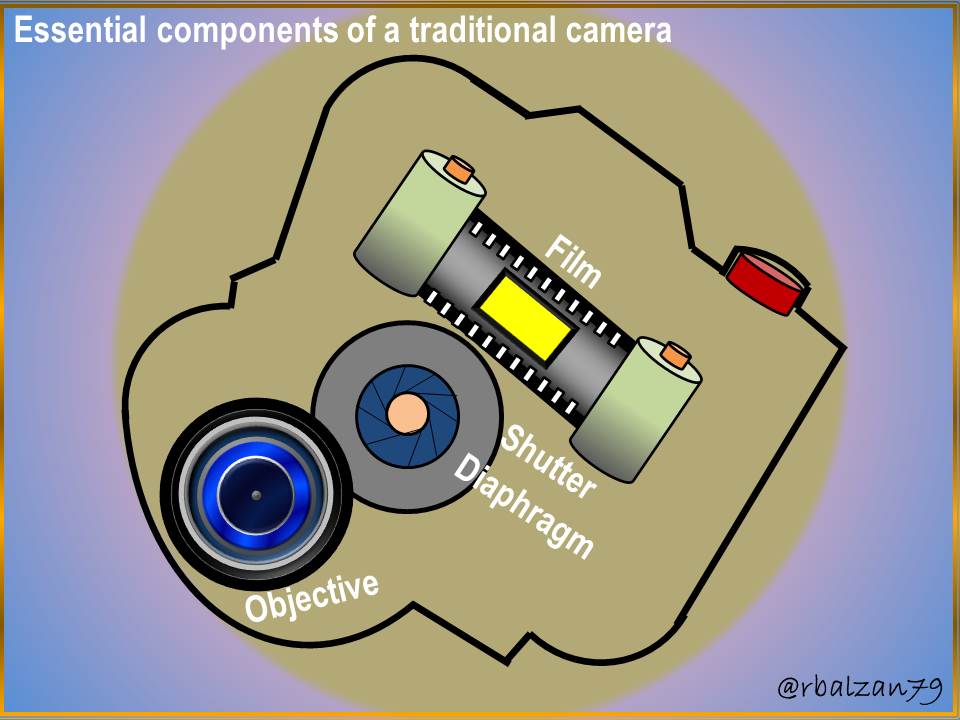Technology in the study of light, from the principle of the camera obscura to the digital camera

We have seen the above in previous articles, which have highlighted the extraordinary and necessary link between science and technology, this time we will continue to highlight so essential for humanity, and talk generally about the leap from the beginning of the camera obscura to the famous camera, and where the link described above (science-technology) has played a leading role.
Thanks to the study of the phenomenon of light and its main principles such as reflection and refraction, it has been possible to structure the most innovative optical instruments through the use of particular optical systems such as mirrors, lenses and prisms, and in this way we have been able to reach the design of digital cameras, which have revolutionized any area of human development.
But when referring to the camera, we must mention the recognized principle of the camera obscura, this technique consisted in the implementation of a certain box with the opening of a hole in one of its sides, and by this opening the luminous rays were introduced that were emitted by any body or object that was around it, these rays were projected on the surface of the wall behind the hole, and thus the image transported by the luminous beam was captured, as you have observed in the gif at the beginning of this article.
Photographic camera
According to the principle expressed above, we began to design the simple photographic cameras, the same constituted by a closed dark box and an opening in one of its sides with the purpose of letting pass the light that would be projected in a receiving screen of the transported image, highlighting that the current photographic cameras have started from the same principle, but, it has been added a series of new optical systems (mirrors, lenses, prisms) and mechanisms, which as we know has greatly improved the formation or capture of the desired images.
One of the most important characteristics in the evolution of photographic cameras is the fact that they can control the passage of light. From the beginning until today, these optical instruments (cameras) have undergone important modifications, starting with the installation of a photographic lens, also known as a lens.
With what has been expressed before, we can say that the old dark cameras (pinhole) started to have a photographic lens or objective, and inside this component there is a diaphragm, whose main role is the regulation or control of the amount of light that passes through the objective lens.
Another advance we have to refer to is the implementation of another component called shutter, and this element is used to control the incidence time that light has on the photosensitive film or digital sensor when it is a modern digital camera.
The shutter is located in front of the film or digital sensor in order to perform the function described above.
Figure 1. Components of a camera
Reflex cameras
With this camera we can see through the viewfinder of this instrument the image as it will be captured in the photosensitive support, this is because it has behind the shutter a folding mirror at an angle of 45 °, therefore inclined, when light passes through the lens will be reflected in the mirror inclined and then continue up to cross a pentaprism and this sends the light rays to the viewfinder, and also reverse the image carried by these rays, and thus see the image as it will be photographed.
At the moment of the shot and with the shutter open, the mentioned mirror will fold and thus allows the passage of the light towards the film or photosensitive plate, and in this way the desired image will be captured, as can be seen in the gif at the beginning of this article.
Conclusion
We can say that at present any person thanks to the remarkable technological advances has been able to use a camera, especially by the incorporation of this optical instrument (camera) to mobile telephony, this has allowed an exponential growth in the implementation of cameras in the various areas where we are.
All of us, thanks to the great technological advances brought to the camera, have been able to share a certain spice-time photographed with a friend or loved one, and this, together with the implementation of the Internet, can share any image or photograph with anyone, no matter where they are on the planet.
Note: The images are of my authorship, made using the Power Point application, and the animated gif was made with the Photoscape application.

Greeting friend @rbalzan79, it is impressive how advanced has been the technology and the capture of images through the cameras, you can say that a high percentage of the population has a camera given that the smartphone is included, These cameras are excellent and some come with optical stabilizer to improve image captures. Excellent content friend !
It's amazing all the complex aspects of optics and light that are behind the technology that has helped to emerge new inventions and contributions in terms of cameras, greetings and thank you for explaining all the aspects that are behind this technology.